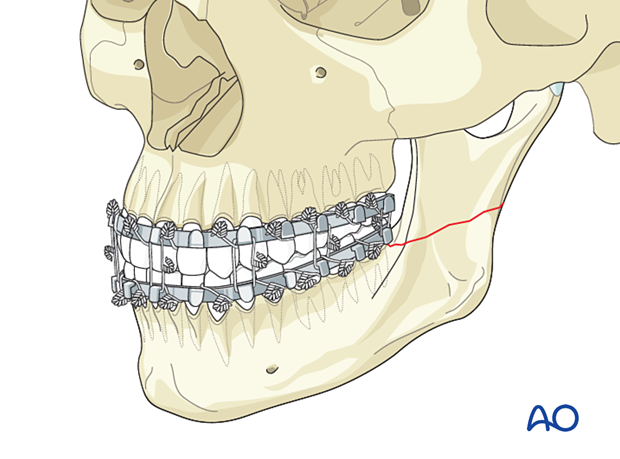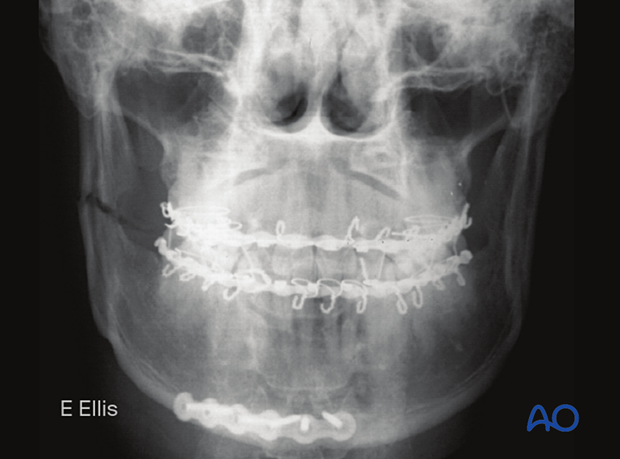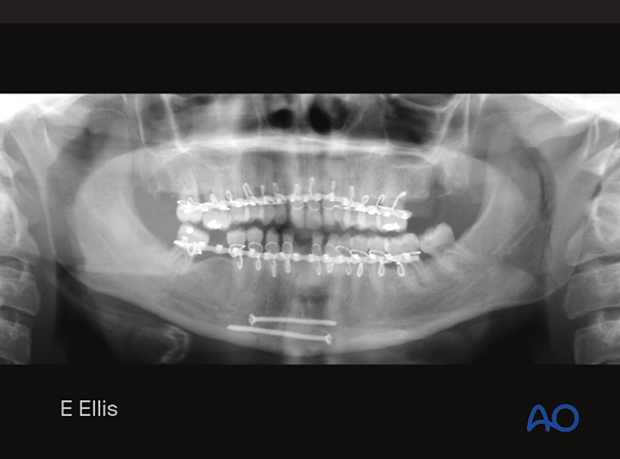Closed treatment
1. Introduction
All ramus fractures can be treated closed.
The surgeon must exercise his or her own judgment on how to treat the specific fracture based on his or her own experience, the nature of the fracture, concomitant injuries, comorbidities and patient expectation and wishes.

2. Closed treatment options
Closed treatment for ramus fractures may involve the following:
- A period of MMF
- Functional therapy (immediate function with elastics)
- A combination of the above
Closed treatment - MMF
Although some surgeons favor no MMF for ramus fractures but prefer immediate function with training elastics to rehabilitate the occlusion, many surgeons prefer to use MMF for various durations.
The recommended period of MMF varies from 7 days to 6 weeks. The younger the patient is, the shorter the period of MMF.
All surgeons who prescribe periods of MMF advise that this is followed by several weeks of functional treatment.
This horizontal ramus fracture was treated closed with 5 weeks of MMF.

Closed treatment – functional therapy
Functional treatment is the use of guiding elastics and a regimen of active mobilization. Some authors explain that the period of active movements with the elastic guidance could be for as long as 3 months. The guiding elastics are initially used full time and the patient is slowly weaned off them. Any elastics are removed for eating.
After a few weeks, many patients only require them at night and during the day they can be omitted. The purpose of guiding elastics is to allow the patient to bite into their proper occlusal relationship. As few elastics as necessary should be used because another goal is the maintenance of good mobility of the jaw.
Removal of the arch bars, MMF screws etc should be delayed until the patient's occlusion has normalized without the use of elastics.
This vertical ramus fracture was treated with functional therapy using elastics to control occlusion and no MMF.














